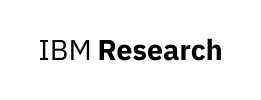© Pint of Science, 2025. All rights reserved.
From mountains, to oceans and even the forgotten trinkets in your home, nature's secrets are hidden everywhere, waiting to be discovered. Join us at the Sober Lane at 7pm to explore these hidden worlds.
The Secret Lives of Porpoises: Can We Keep Their Ocean Home Safe?
Nicole Todd
(Postdoctoral Fellow, University College Cork)
Harbour porpoises are small, elusive, and vital to our marine ecosystems—but their numbers are declining in Irish waters. By using acoustic monitoring, we can uncover their hidden lives, better understand their movements, and the pressures they face. Let’s dive into the world of underwater sound and explore how science can help us create a future where both porpoises and progress can thrive.
Fossils and Volcanoes
Valentina Rossi
(Postdoc, School of BEES (University College Cork))
This story begins in 1889 when farm workers near Mount Tuscolo, southeast of Rome, made a surprising discovery. They unearthed the skeleton of a large bird, later identified as a 30,000-year-old vulture, with its feathers imprinted in the surrounding rock originated from volcanic ash. Remarkably, the feathers were fossilized in a mineral called zeolite.This discovery opens up the possibility that many other ash-rich volcanic rocks may contain remarkable fossils, and are therefore exciting new targets for palaeontological research.
SEX KILLS! Secrets to be told by ancient frogs from Germany
Daniel Falk
(PhD Graduate and Researcher at University College Cork)
Fossils tell us a lot about the life of ancient organisms. The almost 50-million-year-old fossil frogs from the central German Geiseltal locality are a fantastic example for the preservation of bones but also soft tissues. For almost 100 years those frogs were left in drawers, waiting for their scientific destiny to be revealed. We will look at the science of fossil preservation (called “taphonomy”) and unveil the mystery of the frog’s preservation and their infamous death. Spoiler alert: it is getting naughty…
Map data © OpenStreetMap contributors.

